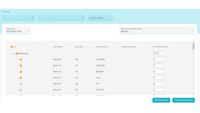In theory, a BAS provides all of the hardware and software required to analyze and operate all functions within a building. In reality, though, what most of these systems do best is control the HVAC system. This leaves the critical tasks — evaluating building performance, deciding if it is optimal, and identifying what changes might be required to improve efficiency — to the operator. On most projects, the end results are a BAS that is underutilized and system performance that is less than optimal.
Over the last several years, there has been a movement to provide software-based tools to better analyze issues related to building operations. There is a broad variety of tools and services being offered, and their functionality varies from providing improved tools to view system data to automated systems that perform optimization. Here is a summary of the different types of tools available.
DIY Tools. The most elementary and least expensive data analysis tools are the ones that are most likely already installed on most computers and provided with many BAS installations. These tools include the graphics, reports, and trend logs that are available in most BAS installations. These can be used on their own for analysis or coupled with spreadsheets to view, track, and analyze energy and systems. While DIY tools have the lowest first cost, they can require extensive expertise and can be a challenge to set up and maintain.
Energy Information Systems (EIS). These provide the ability to track, normalize, and analyze data related to energy usage. These tools can use real-time data from meters and BAS as well as information gathered from utility bills. EIS tools vary greatly in their capabilities and cost. They are a good starting point for better capturing energy usage information and making comparisons and decisions.
Analytics. Most data analytic solutions provide a mechanism to collect data from the building, normalize and store it, and then provide tools and services to visualize and interpret the data. Some data analytic packages provide tools for an experienced operator to better understand how their facility is operating and make decisions. Others provide for a regular report with recommended actions.
Continuous Optimization. The final set of solutions comprise those that analyze the data and then provide real time feedback to the BAS to change settings, parameters, or schedules for improved efficiency and optimizations. The same solutions can also be used for functions such as automated demand response.
The decision about which group of solutions to select, and which of the many products or services to consider, is not trivial. It requires careful consideration of the facility, the operations staff, the condition of existing systems, and the cost and benefits of the selected solutions.
We believe that even though analytics are fairly new, they are an invaluable tool for better understanding how a facility is operating and in making decisions to improve comfort and efficiency. You should carefully consider adding an analytic solution for both new and existing BAS projects.





